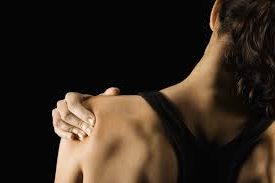Your bones, joints, and muscles make up the musculoskeletal system that facilitates your movements. With time, people can develop musculoskeletal problems or get injuries that can restrict their movements and cause pain.
However, there are many treatment options available for bone, joint, and muscle disorders. These range from anti-inflammatory medications to surgery.
Read on to learn more about all these treatment options to better understand which treatment is right according to your specific condition.
Common Bone, Joint, and Muscle Disorders
There are a wide range of conditions that affect bones, joints, muscles, nearby tissues, and the skeletal system. Some of these common disorders include:
- Osteoarthritis
- Rheumatoid arthritis
- Psoriatic arthritis
- Gout
- Sarcopenia
- Osteoporosis
- Traumatic fracture
- Osteopenia
- Fibromyalgia
These are just a few of the most common bone, joint, and muscle disorders that people may experience. It is important to consult a healthcare professional to properly diagnose and manage your specific condition. Search for Dubai hospital, to find the nearest hospital to you.
You may be referred to an orthopedic doctor for specialized treatment for musculoskeletal problems. Alternatively, you can also search for orthopedic doctors in your specific location, such as orthopedic doctors in Dubai, to find a suitable specialist.
Treatment Options for Bone, Joint, and Muscle Disorders
The treatment options for bone, joint, and muscle disorders depend on your specific condition. While most of these conditions can be treated with non-invasive treatments such as physiotherapy and medications, some may require surgery.
These treatment options include:
-
Medication
Medications for bone, joint, and muscle disorders include pain relievers such as acetaminophen or ibuprofen, and muscle relaxants such as anticonvulsants and anti-inflammatories. These can include aspirin, naproxen, or ibuprofen.
In case of joint pain, you may be prescribed corticosteroid joint injections and topical analgesics, such as gels, creams, and patches.
-
Physiotherapy and Chiropractic Manipulation
Depending on your condition, your orthopedic doctor may also refer you to a physiotherapist or chiropractor for hands-on therapy. These are some of the most common hands-on techniques used for bone, joint, and muscle disorders with unique benefits.
Physiotherapy mainly focuses on improving and restoring your mobility. It can include manual therapy, tailored treatment plans, therapeutic exercises, and proper education to exercise at home.
While chiropractic manipulation specifically targets spinal problems. During a chiropractic session, your specialist will perform manual adjustments to fix your spinal alignment. It is mainly used to improve joint function and relieve pain.
-
Hot or Cold Therapy
Your healthcare professional may also advise you to opt for hot or cold therapy, depending on your condition. These therapists are used to reduce inflammation and relieve pain in bones, joints, and muscles.
Hot therapy involves the use of heating pads or warm towels to relax your muscles and circulate blood in the affected area. It is mainly used to relieve stiffness and help you relax. It is mostly recommended for patients with chronic pain, muscle strains, or osteoarthritis.
On the other hand, cold therapy involves the use of cold compresses or ice packs. It is also used to reduce inflammation and create numbness in the area. Cold therapy constricts your blood vessels to reduce swelling. It is mainly used for sprains, swelling, and acute injuries.
Both hot and cold therapies can help alleviate pain and offer comfort to the affected area. However, it is important to consult with your orthopedic doctor to determine whether they’re beneficial for your specific condition.
-
Massage Therapy
You can also turn to a licensed massage therapist to get massage therapy for your musculoskeletal problems. Massage therapy helps improve flexibility, restore function, and reduce pain. It is often included in a comprehensive treatment plan for musculoskeletal disorders.
Massage therapy is ideal for conditions like muscle sprains, muscle strains, back pain, osteoarthritis, rheumatoid arthritis, and fibromyalgia. However, you will need tailored massage techniques by a licensed therapist to address your needs while keeping your limitations in mind.
-
Surgery
Typically, surgery is a last resort for musculoskeletal disorders. When all of the conservative treatments fail to relieve the symptoms of your disorder, you will be asked to opt for surgery.
Some of the most common surgical procedures for bone, joint, and muscle disorders include:
- Joint replacement
- Arthroscopy for joints
- Laminectomy for spine
- Soft tissue repair
- Fracture repair
- Bone deformity correction
However, it is advised to opt for non-invasive treatments first before resorting to surgery. If surgery is the only option, you will have to go through a comprehensive evaluation by your orthopedic doctor to determine the right action plan. You will also have to go through post-surgery rehabilitation to regain your mobility and function.
Conclusion
In conclusion, musculoskeletal disorders include a huge range of conditions, ranging from muscle strains to deformities and features. There are multiple treatment options available for bone, joint, and muscle disorders.
However, it is important to consult with an orthopedic doctor to correctly diagnose your condition. If you are looking for an ortho doctor in Dubai, book your appointment today to start your journey towards recovery.








